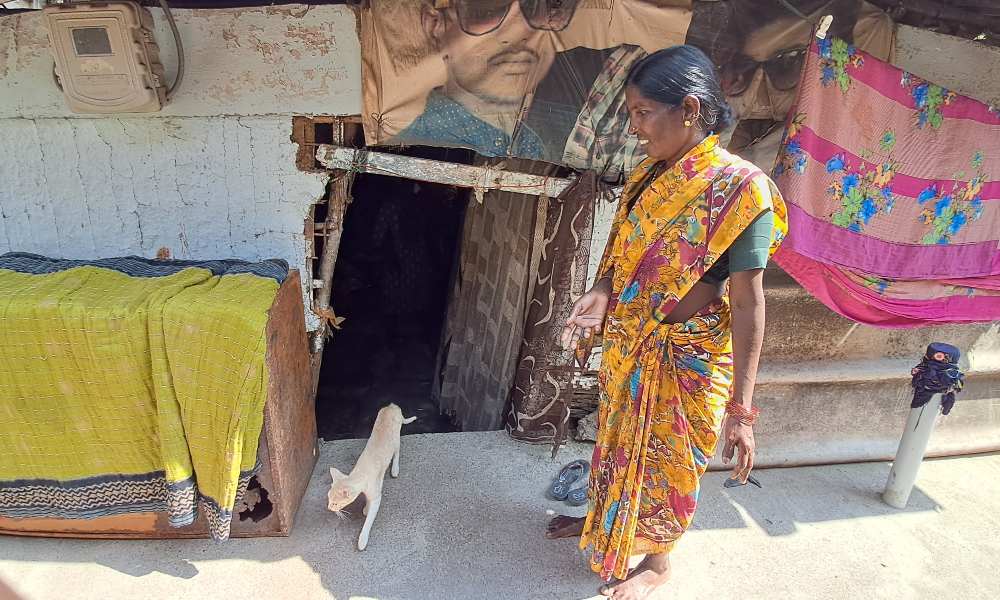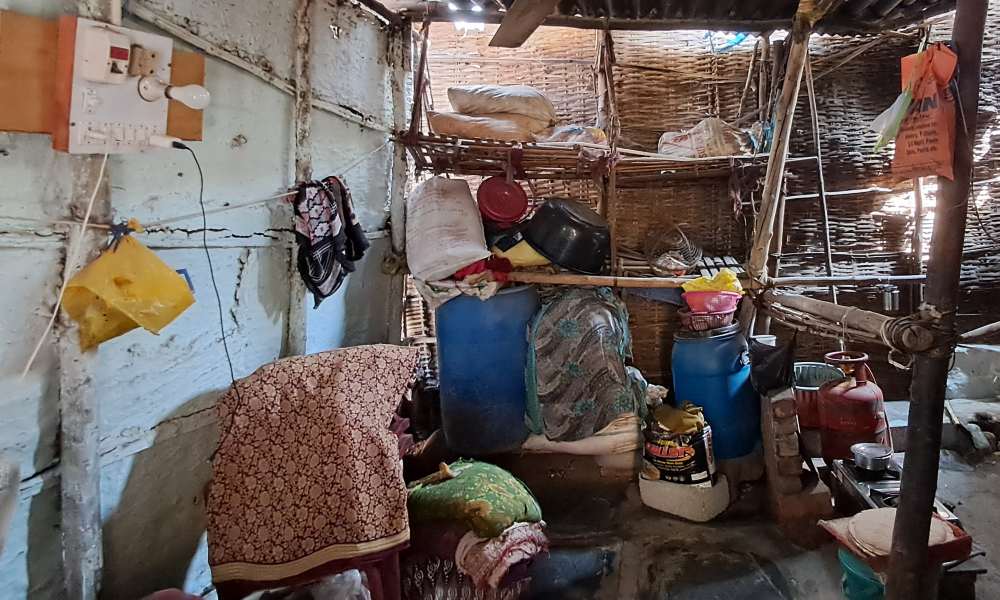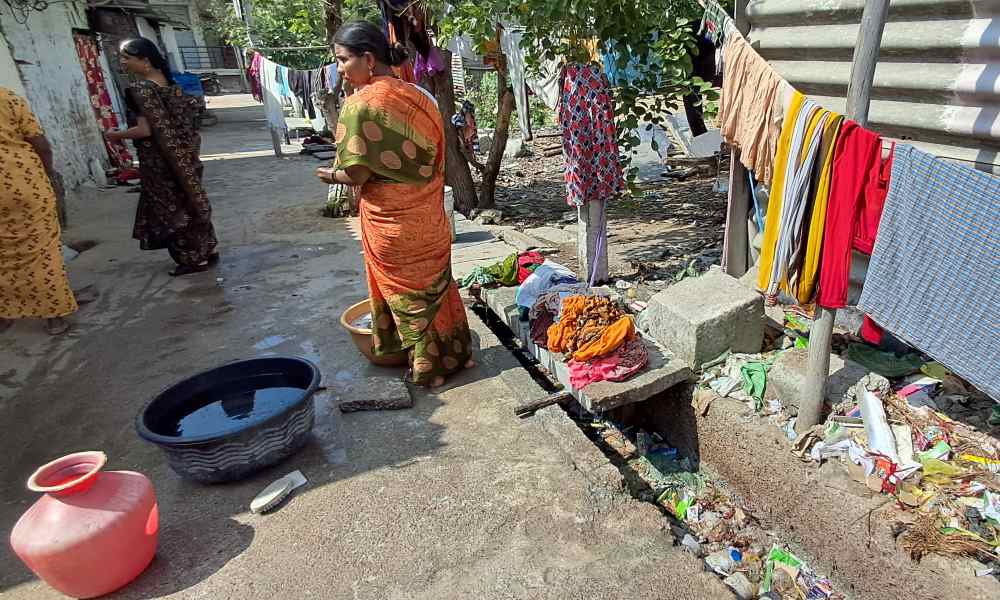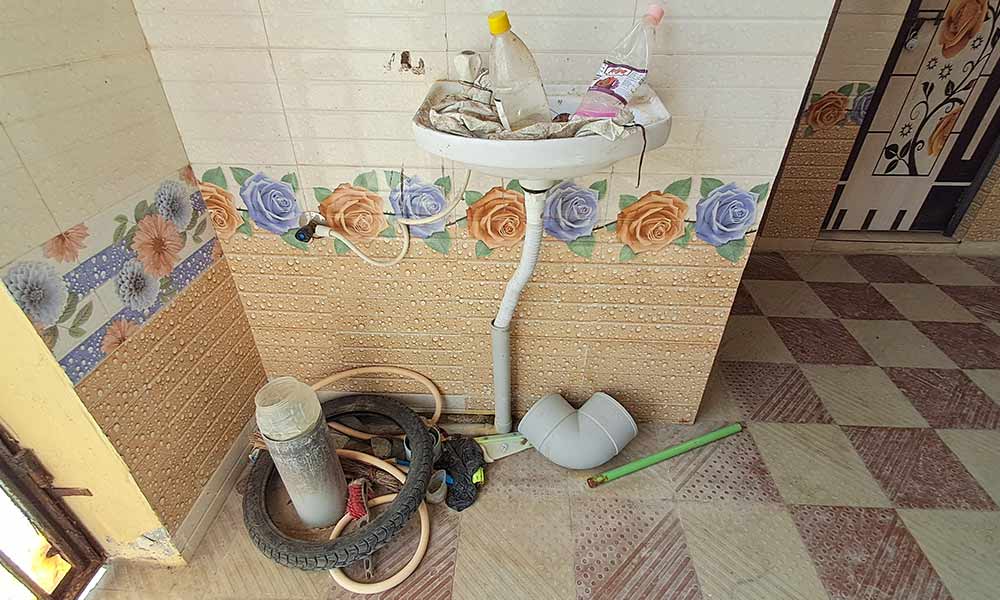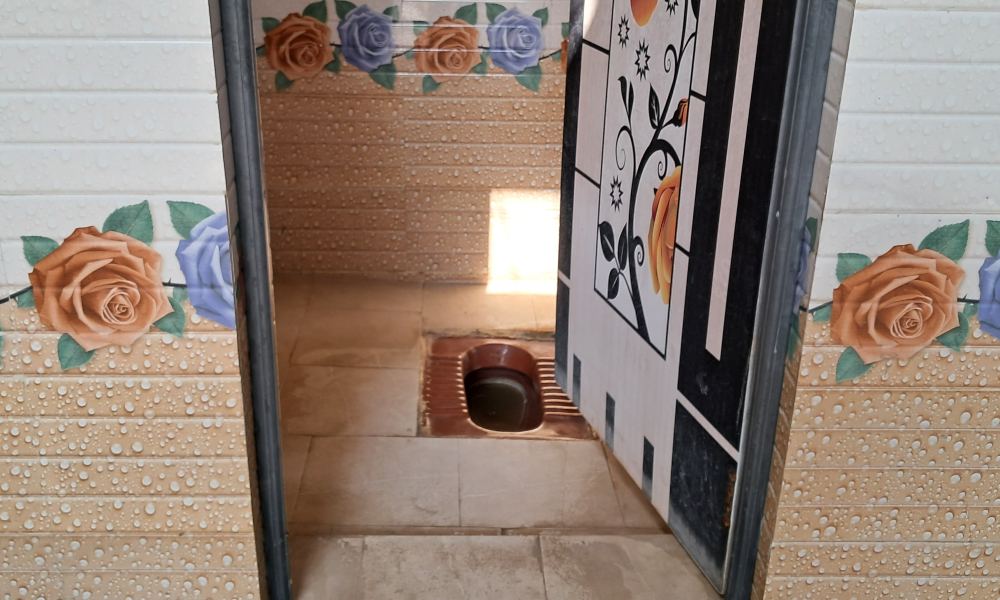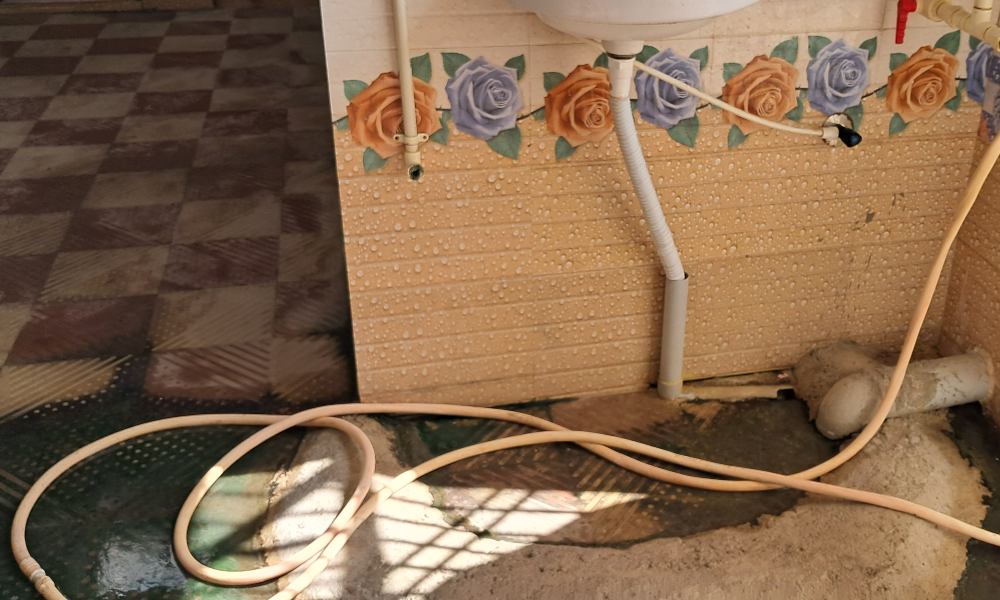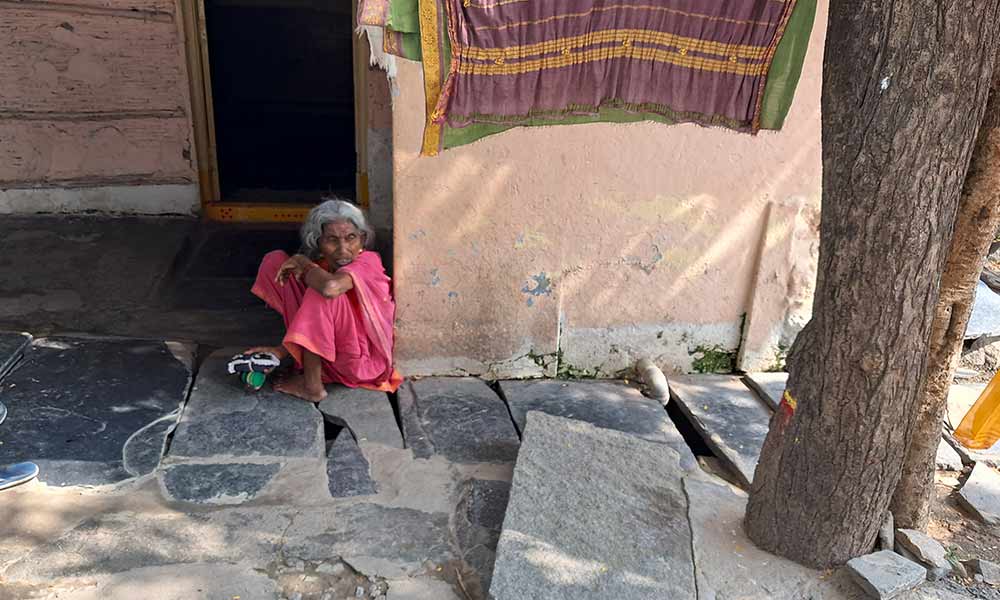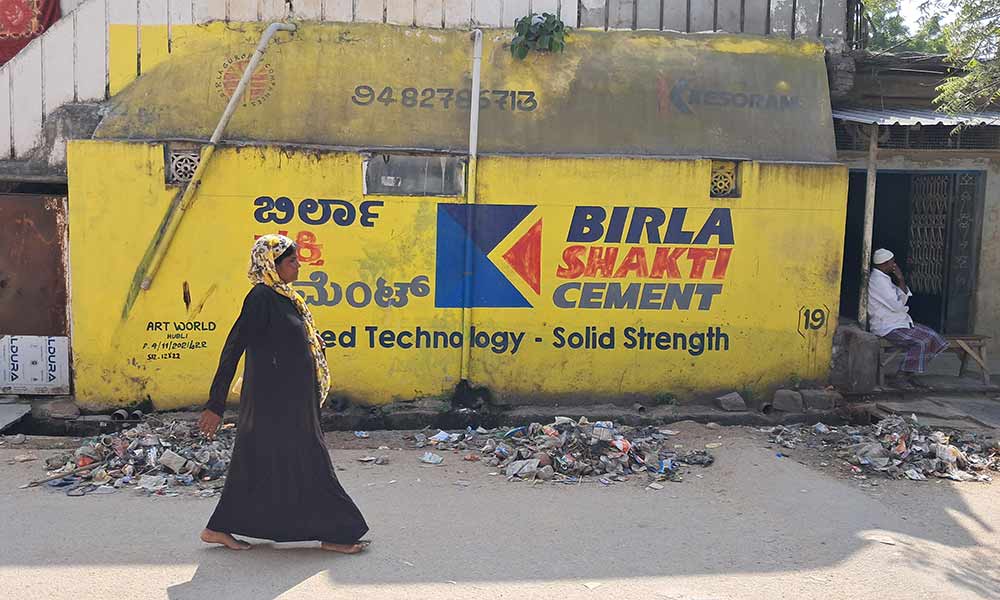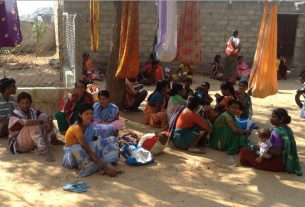Residents in the Mehbooba Slum lack proper sanitation facilities, as none of the houses have toilets, and the community toilet in the area is either locked or in an unclean condition.
Lakshmamma gets up as early as 4 a.m. in order to stand in a queue before the community toilet in Mehbooba Slum in Sindhanur. That morning, the toilet was locked, and there was no line. In the hushed dawn, she headed to the shed where the key holder for the community toilet resided. Three knocks yielded only silence. Defeated, she returned to her hut, realizing she’d have to wait until 9 a.m. for the caretaker to awaken and unlock the restroom.
As most of the residents of about 100 houses in the Slum are daily wage labourers, their day begins much earlier than 4 a.m. Lakshmamma says the toilet built by the Sindhanur City Municipal Council (CMC) often lacks water supply and remains locked half the time.
The maintenance of the community toilet in the area is notably inadequate. The individual toilets are generally clogged and not cleaned properly. Most of the time there is no water in the toilet. A single attendant oversees the facility, charging Rs. 3 per person for a one-time use. The toilet is locked in the morning and afternoon when the attendant goes to the market for groceries. This poses a challenge for many people who require access, particularly before heading to work in the morning.
Several residents do not pay the attendant the Rs. 3. Akash, the attendant, said that working for such a low income becomes challenging for him. He lives with his wife in a small shed adjacent to the toilet. He said, “Several residents use the facilities without paying Rs. 3. They promise to pay later, but it never happens.”
In Mehbooba Colony (ward 22 and 23), slum dwellers predominantly work as construction laborers. Some women take on odd jobs in hotels. Despite 25 years of settlement, small house sizes prevent them from building toilets.
The situation is further worsened by infrequent garbage clean-up in the area—it is cleared only once every three to four days. “Despite paying Rs. 3, the toilet remains dirty, with clogged pots and water on the floor. Adolescent girls dispose of sanitary napkins openly due to the lack of dustbins and garbage in the area is rarely cleaned. As a result, men resort to open defecation behind the nearby Tehsildar office, while women are forced to defecate in proximity to open drains. This affects the elderly and women most, given their heightened vulnerability to contracting diseases under such circumstances,” Mahmooda Begum said. She has been residing in the slum for 37 years, works for the empowerment of women and helps other residents in need.
Mahmooda Begum said that diseases like chikungunya, dengue, malaria, and typhoid are widespread in the slum, with residents like Lakshmamma compelled to use their meager earnings for treating recurring urinary tract infections and diseases like leprosy caused by unhygienic conditions. She added, “In the past two years, 27 women were diagnosed with leprosy, resulting in eight to 10 deaths due to chronic infections.”
“Using drain water for cleaning is a common practice here,” Lakshmamma said casually. Despite reaching out to elected representatives, they haven’t received any help in building a toilet. Lakshmamma has lived in Mehbooba Slum for 25 years. The place lacks proper toilet facilities. Swathi, a public health researcher at the Institute of Public Health in Bangalore, said that women in slums suffer not only from health issues but also physically and mentally due to unclean toilets.
Additionally, residents of the slum said that Sindhanur lacks government hospitals except for the Taluk General Hospital, which lacks specialized care and often faces shortages of medicines. Manni Aapa, a hospital staff nurse, said that there has been a rise in dengue and malaria cases due to the area’s population growth. “Monthly, there are over 100 cases of these diseases, mainly affecting people from the slum areas,” she said. The inadequacy of specialized care at the Taluk General Hospital compels people to seek treatment in Bellary or Raichur, incurring expenses beyond their means. The local Primary Health Centers (PHCs) are unable to help due to staff shortages, including doctors, nursing staff, and a lack of essential medicines.
Even though the community toilets in the slum are either dirty or locked, the senior health inspector at the CMC, Kishan Kulkarni,said that the garbage is collected daily in all the 31 wards. “Open drains are cleaned every three to four days,” he said. The entire Sindhanur taluk is connected through open drains, thus worsening the impact of sanitation problems on the broader community.
He added, “Sindhanur has a total of 22 community toilets and eight public toilets. In 2021, it was declared open defecation-free as part of the Swachh Bharat Mission in Karnataka.” He said that the municipal council has employed 88 workers for garbage cleanup, collecting 35 tonnes of garbage daily throughout the taluk. Nevertheless, Mehbooba slum remains as one of the most unsanitary areas in the taluk, with residents expressing dissatisfaction over garbage cleanup occurring only once every 15 to 20 days.
Experts say that in water-scarce areas, technology can be used by introducing bio toilets to conserve water. Dr. Venkatesh, public health professor at Padmashree School of Public Health said, “Firstly, more awareness should be raised regarding the link between open defecation and the transmission of communicable diseases, and precautionary measures. Secondly, to address the issue of government funds not effectively reaching the local population for toilet construction, a grassroots committee should be established, led by the gram panchayat head, to conduct surveys identifying areas lacking adequate sanitation facilities and ensuring universal access. Thirdly, in regions facing water scarcity, technological solutions such as bio toilets can be introduced to conserve water and reduce the need for manual cleaning.”


